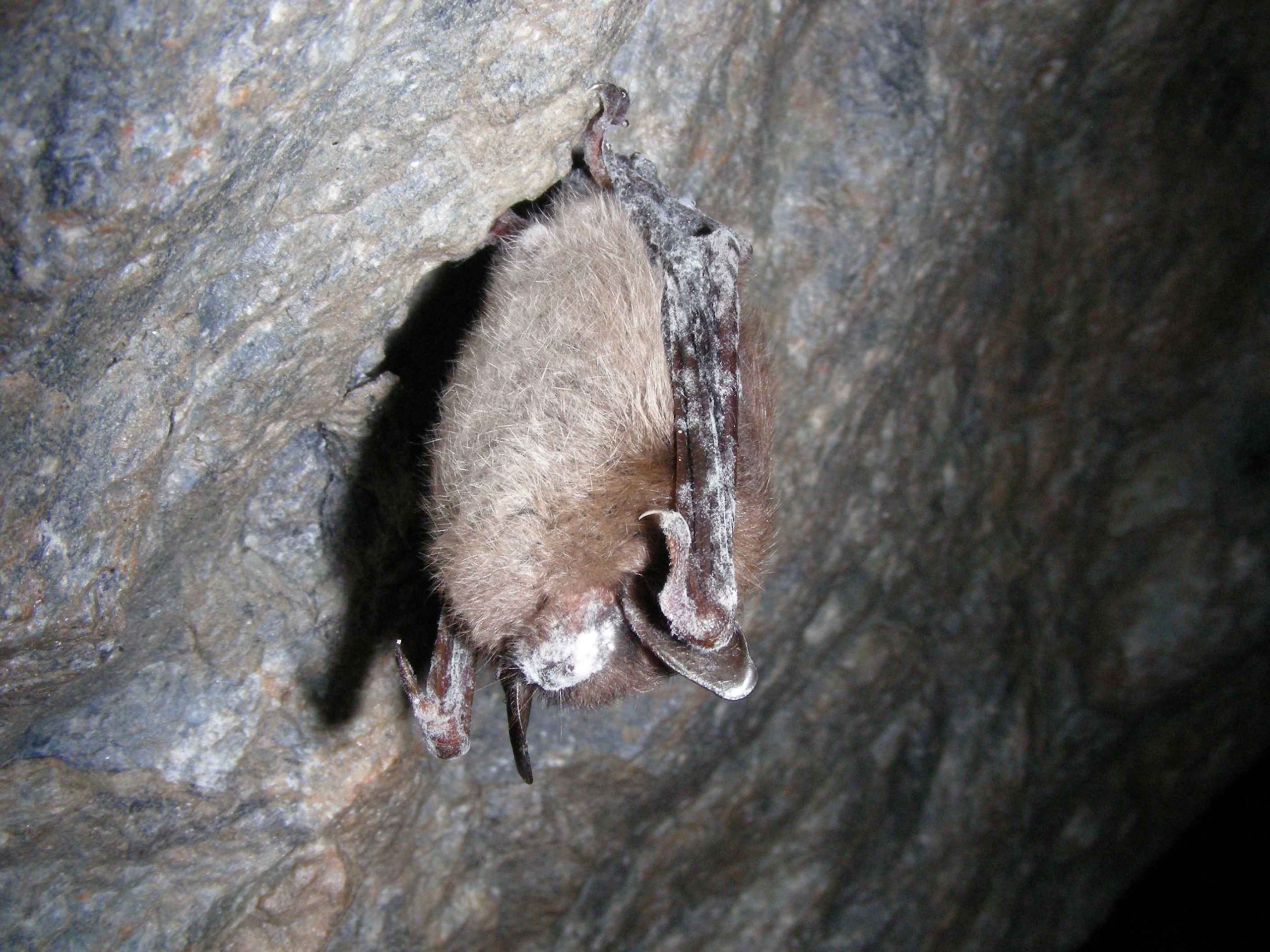Fungus Responsible for White-Nose Syndrome Discovered on 100-Year Old European Bat Specimen

Scientists report the earliest known historical incidence of the fungus responsible for white-nose syndrome (WNS), the disease devastating North American bat populations. They detected the fungus on a bat specimen collected in France in 1918 and housed at the National Museum of Natural History in Washington, D.C. The discovery provides more evidence that the disease originated in Europe and arrived in North America only recently.
WNS was first documented in North America in 2006 in a cave in upstate New York. Since then, it has spread rapidly, killing more than 6 million bats in 31 states and 5 Canadian provinces. WNS is caused by a fungus named Pseudogymnoascus destructans that grows like a white fuzz on the muzzles and wing membranes of hibernating bats. The fungus causes bats to wake up more frequently during the winter, using up valuable energy reserves.
“What is most insidious is that bats congregate in caves to hibernate during the winter, and the fungus thrives on cold,” says Lori Eggert, a wildlife biologist at the University of Missouri who was not involved in the new study. “It is attacking them at a time when the bats are sitting ducks.”
The fungus has been found in multiple bat populations in Europe and Asia, but without the mass deaths that are occurring in North America. Scientists suspect the fungus originated in Europe and was introduced to North America by human activity, such as cave visitors unknowingly transporting it on their gear or clothing.

“It seems to be the same organism that is currently infecting North American bats, providing evidence that WNS has been around in Europe for a long time, at least 100 years,” says Michael Campana, a computational genomics scientists at the Smithsonian Institution Conservation Biology Institute’s Center for Conservation Genomics and one of the study’s authors.
In addition, the researchers found no evidence of the fungus in any of the North American bat specimens.
The results support a European origin for WNS and show how museum collections can be used in cutting edge research. Knowledge of the origin and history of the fungus in Europe could inform conservation and management efforts in North America, where some bat populations are struggling to cope with this new threat.

“Many of the bats in North America are important because they feed on insects, including agricultural pests,” says Robert Fleischer, a senior scientist at the Smithsonian Institution Conservation Biology Institute’s Center for Conservation Genomics and one of the study’s authors. “The ecological consequences of losing our bats would be really horrible.”
The ability of European bat populations to coexist with WNS offers some hope: If European bats evolved resistance to WNS, it may be possible for North American species, as well.
“We now know that 100 years ago, the same strain of fungus was present in France, and that currently, European bats are not reacting in the same way as the bats in North America,” says Eggert.
“This points to European bats and the fungus going through some kind of co-evolution so that it was no longer a problem for them and suggests that it may happen in North America, too. Whether it will happen before some species are wiped out, however, we don’t know.”
Reference:
Campana, M. G., Kurata, N. P., Foster, J. T., Helgen, L. E., Reeder, D. M., Fleischer, R. C., and Helgen, K. M. (2017). White-Nose Syndrome Fungus in a 1918 Bat Specimen from France. Emerging Infectious Diseases 23(9): 1611-1612. Doi: 10.3201/eid2309.170875.
